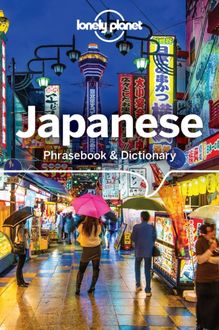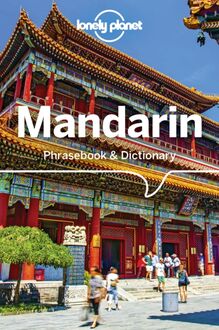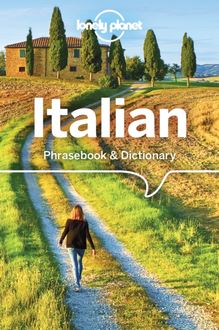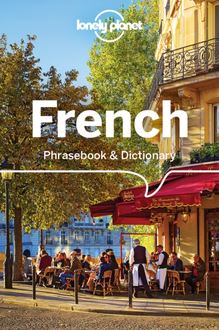Lonely Planet Italian Phrasebook & Dictionary with Audio , livre ebook
320
pages
English
Ebooks
2018
Vous pourrez modifier la taille du texte de cet ouvrage
Obtenez un accès à la bibliothèque pour le consulter en ligne En savoir plus
Découvre YouScribe en t'inscrivant gratuitement
Découvre YouScribe en t'inscrivant gratuitement
320
pages
English
Ebooks
2018
Vous pourrez modifier la taille du texte de cet ouvrage
Obtenez un accès à la bibliothèque pour le consulter en ligne En savoir plus
Publié par
Date de parution
01 septembre 2018
Nombre de lectures
2
EAN13
9781788686310
Langue
English
Poids de l'ouvrage
8 Mo
Publié par
Date de parution
01 septembre 2018
Nombre de lectures
2
EAN13
9781788686310
Langue
English
Poids de l'ouvrage
8 Mo
Italian audio phrasebook
September 2018
Published by
Lonely Planet Global Limited CRN 554153
Cover Image
Traditional farmhouse near Pienza, Tuscany. Luigi Vaccarella/4Corners
ISBN 9781788686310
Text Lonely Planet 2018
All rights reserved. No part of this publication may be reproduced, stored in a retrieval system or transmitted in any form by any means, electronic, mechanical, photocopying, recording or otherwise, except brief extracts for the purpose of review, without the written permission of the publisher.
Lonely Planet does not allow its name or logo to be appropriated by commercial establishments, such as retailers, restaurants or hotels. Please let us know of any misuses: www.lonelyplanet.com/ip .
Lonely Planet and the Lonely Planet logo are trade marks of Lonely Planet and are registered in the US Patent and Trademark Office and in other countries.
Although the authors and Lonely Planet try to make the information as accurate as possible, we accept no responsibility for any loss, injury or inconvenience sustained by anyone using this book.
This edition of Lonely Planet s Italian phrasebook is based on the previous editions by the Lonely Planet Language Products team and Pietro Iagnocco, Karina Coates, Susie Walker and Mirna Cicioni for the Italian translations and pronunciation guides.
Lonely Planet s Language Products team consists of: Tali Budlender (Associate Publisher), Annelies Mertens (Managing Editor), Branislava Vladisavljevic and Laura Crawford (Editors), Celia Wood (Managing Layout Desiger), Wibowo Rusli (Layout Designer), Wayne Murphy (Cartographer), Yvonne Kirk and Glenn van der Knijff (Production Support).
Thanks also to the others who contributed to the previous editions on which this one is based: Jane Atkin, Francesca Coles, Adrienne Costanzo, Ben Handicott, Jim Jenkin, Piers Kelly, Emma Koch, Paul Piaia, Fabrice Rocher, Karin Vidstrup Monk, Meg Worby, and Yukiyoshi Kamimura who created the inside illustrations.
Table of Contents
INTRODUCTION
language map
introduction
TOOLS
pronunciation
a-z phrasebuilder
language difficulties
numbers amounts
time dates
money
PRACTICAL
transport
border crossing
accommodation
directions
shopping
communications
business
banking
sightseeing
disabled travellers
children
SOCIAL
meeting people
interests
feelings opinions
going out
romance
art
beliefs cultural differences
sports
outdoors
FOOD
eating out
self-catering
vegetarian special meals
culinary reader
SAFE TRAVEL
essentials
health
SUSTAINABLE TRAVEL
DICTIONARIES
english-italian dictionary
italian-english dictionary
There is audio and/or video content in this eBook that may not be supported on your device.
make the most of this phrasebook ...
Anyone can speak another language! It s all about confidence. Don t worry if you can t remember your school language lessons or if you ve never learnt a language before. Even if you learn the very basics, your travel experience will be the better for it. You have nothing to lose and everything to gain when the locals hear you making an effort.
finding things in this book
For easy navigation, this book is in sections. The Tools chapters are the ones you ll thumb through time and again. The Practical section covers basic travel situations like catching transport and finding a bed. The Social section gives you conversational phrases, pick-up lines, the ability to express opinions - so you can get to know people. Food has a section all of its own: gourmets and vegetarians are covered and local dishes feature. Safe Travel equips you with health and police phrases, just in case. Remember the colours of each section and you ll find everything easily; or use the hyperlinks provided in the Table of Contents. Otherwise, check the two-way traveller s Dictionary for the word you need.
being understood
Throughout this book you ll see coloured phrases beneath each translation. They re phonetic guides to help you pronounce the language. You don t even need to look at the language itself, but you ll get used to the way we ve represented particular sounds. The pronunciation chapter in Tools will explain more, but you can feel confident that if you read the coloured phrase slowly, you ll be understood.
using the audio
You ll notice the audio icons beneath a selection of phrases in this book. Use the audio to help master your own pronunciation, or use it on the road by letting it do some of the talking for you.
For more details, see the introduction .
INTRODUCTION
introduzione
English-speakers will find Italian a beautiful language to listen to and an easy one to start speaking. The expressive rhythm and melody of the language, which has lent itself to the epic poetry of Dante and the grand operas of Verdi, has fascinated visitors for centuries. When even a simple sentence can sound like an aria you ll find it difficult to resist striking up a conversation.
Of all the Romance languages - which include French, Spanish, Portuguese and Romanian - Italian claims the closest family relationship to Latin. Because English has been heavily influenced by Latin (particularly through its contact with French), there are many basic resemblances between the two languages. Today, thanks to wide-spread migration and the enormous popularity of Italian culture and cuisine, most of us are also familiar with modern Italian words like ciao , pasta , and bello .
at a glance ...
language name: Italian
name in language: italiano ee ta lya no
language family: Romance
key country: Italy
approximate number of speakers: 65 million
close relatives: French, Spanish, Portuguese
donations to English: Words to do with food, including spaghetti, broccoli and macaroni. Musical words like virtuoso, opera and viola. Architectural terms such as studio and stucco. Artistic words such as maestro and fresco.
Outside Italy, Italian is spoken by minorities in Switzerland, Slovenia and France, and more recently by large communities of immigrants in Australia, Argentina and the US. Italian has official status in the Istrian peninsula of Croatia where Italian-speaking communities have existed since the Venetians began colonising parts of the Dalmatian coast during the twelfth century. Another country where Italian is spoken is the African nation of Eritrea which remained a colony of Italy from 1880 until 1941. Today most Eritreans speak Italian only as a second language.
Around the world there are approximately 65 million Italian speakers, the majority of whom live in Italy. In Italy itself, most people also speak a local dialect. Dialects are spoken all over the country and some are so different from standard Italian as to be considered distinct languages in their own right. In fact, it wasn t until the nineteenth century that the Tuscan dialect - the language of Dante, Boccaccio, Petrarch and Macchiavelli - was chosen to become the standard language of the nation. Standard Italian is the official language of schools, media and administration, and is the form that will take you from the top of the boot to the very toe. All the language that we have provided here is in standard Italian.
This book gives you the words you need to get by, as well as all the fun, spontaneous phrases that lead to a better experience of Italy and its people. Need more encouragement? Remember, the contact you make through using Italian will make your travels unique. Local knowledge, new relationships and a sense of satisfaction are on the tip of your tongue, so don t just stand there, say something!
abbreviations used in this book
f feminine inf informal m masculine sg singular pl plural pol polite
TOOLS pronunciation
la pronuncia
vowel sounds
consonant sounds
word stress
plunge in!
The Italian sound system will be familiar to most English-speakers: almost all of the sounds you ll hear exist in English. You might notice some slight differences, particularly with the vowel sounds, but there s nothing to stop you having a go and being understood. Standard Italian pronunciation is given in this book - the same form that s used in education and the media.
vowel sounds
symbol english equivalent italian example a f a ther p a ne e r e d l e tto ee b ee v i no o p o t m o lo oo t oo k fr u tta
Vowel sounds are generally shorter than English equivalents. They also tend not to run together to form vowel sound combinations (diphthongs), though it can often sound that way to English-speakers. The following table presents four vowel sounds that roughly correspond to diphthongs in English:
symbol english equivalent italian example ay s ay vorr ei ai ai sle m ai oy b oy p oi ow c ow ci ao / au
consonant sounds
symbol english equivalent italian example b b ig b ello ch ch illi c entro d d in d enaro dz li ds me zz o/ z aino f f un f are g g o g omma j j am cu g ino k k ick c ambio/ q uanto l l oud l inea ly mi lli on fi gli a m m an m adre n n o n umero ny ca ny on ba gn o p p ig p ronto r r un (but stronger and rolled) r istorante s s o s era sh sh ow sh opping t t in t eatro ts hi ts gra z ie/sicure zz a v v an v iaggio w w in u omo y y es ital i ano z z oo ca s a
As well as the pronunciation described above, Italian consonant sounds have an additional form that you ll notice: a stronger, almost emphatic, pronunciation. The actual sounds are basically the same, though meaning can be altered between a normal consonant sound and this double consonant sound. It s referred to as a double consonant because usually if the word is written with a double consonant, that s the cue to use the stronger form.
Here are some examples where this double consonant effect can make a difference:
sleep
sonno
son no
I am
sono
so no
baby food
pappa
pap pa
pope
papa
pa pa
Unlike the above examples, the phonetic guides in this book don t distinguish between the two forms. Refer to the written It




